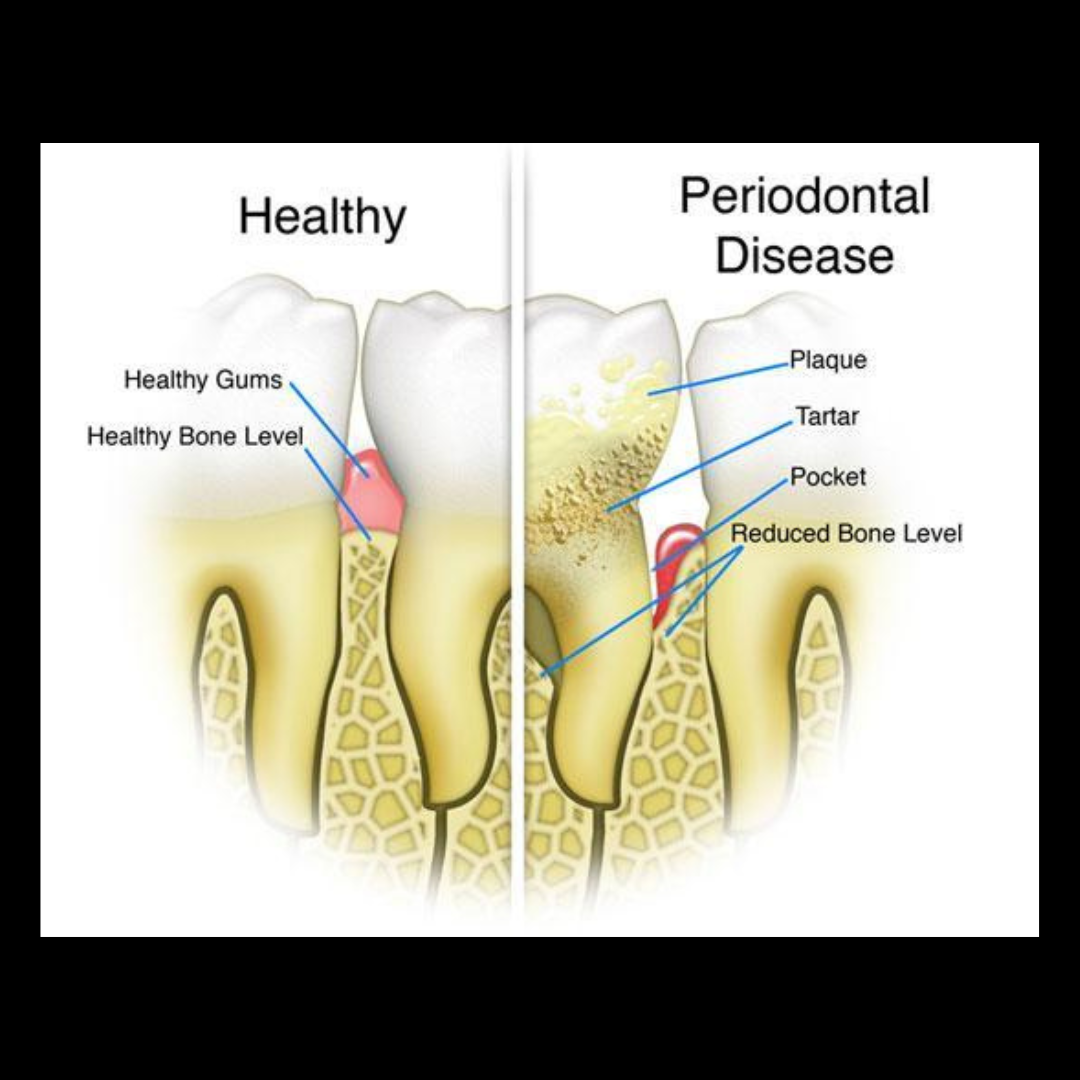Gum health | falls church, va
periodontal therapy
Get Relief From Gum Disease
If your gums bleed when you brush, feel sore, or have started to recede, you may already have the early signs of gum disease. At Purple Plum Dentistry in Falls Church, we provide advanced periodontal therapy to treat infection, stop bone loss, and prevent permanent damage. Gum disease is silent at first but can quickly lead to tooth loss if ignored. We help patients reverse the damage and save their natural smile, without surgery when caught early.
What Causes Gum Disease and Why It Gets Worse Over Time
Gum disease (also called periodontitis) is caused by a buildup of plaque and bacteria beneath the gumline. Without professional cleanings, this bacteria hardens into tartar, triggers inflammation, and causes the gums to pull away from the teeth. As the infection spreads, it destroys tissue, bone, and eventually your teeth.
warning signs include:
- Gums that bleed easily when brushing or flossing
- Persistent bad , swollen, or tender gum tissue
- Loose teeth or shifting bite
- Receding gums exposing tooth roots

.png)
What is Periodontal Therapy?
Periodontal therapy encompasses a range of treatments aimed at combating periodontal disease, a condition that affects the gums and supporting structures of the teeth. Left untreated, this disease can lead to tooth loss and other serious health issues. At Purple Plum Dentistry, our approach to periodontal therapy is both preventive and restorative. We focus on stopping the progression of gum disease and repairing the damage it has caused.
Gum Graft Surgery
For patients with severe gum recession, gum graft surgery can be an effective solution. This surgical procedure involves taking tissue, often from the roof of the mouth, and grafting it onto the affected gum areas. Gum graft surgery not only covers exposed roots to reduce sensitivity, but also helps prevent further gum deterioration and improve the appearance of your smile.
Why Early Treatment Matters
Gum disease is the #1 cause of tooth loss in adults, and it’s linked to serious health problems like heart disease, diabetes, and respiratory issues. The longer you wait, the more damage it causes—not just to your smile, but your entire body.Early treatment is faster, less invasive, and far more affordable than surgical care down the road.
Book Your Periodontal Therapy Consultation in Falls Church
If your gums bleed, hurt, or just don’t feel right—don’t wait.
Our experienced team at Purple Plum Dentistry will examine your oral health and walk you through the best options to restore and protect your smile. Whether you need deep cleaning, targeted therapy, or just preventive care, we’re here to help.
Schedule your appointment today and take the first step toward healthy, strong gums.
Benefits of Periodontal Therapy
Periodontal therapy offers several significant benefits that extend beyond just oral health. Here are four key benefits:
One of the primary benefits of periodontal therapy is the prevention of tooth loss. Periodontal disease, if left untreated, can lead to the destruction of the bone and connective tissue that support the teeth.
Periodontal disease is associated with chronic inflammation, which can have adverse effects on overall health. By treating periodontal disease, patients can reduce systemic inflammation, potentially lowering the risk of related health conditions such as cardiovascular disease, diabetes, and rheumatoid arthritis.
Periodontal therapy helps improve oral hygiene by thoroughly cleaning the pockets around the teeth, which are difficult to clean with regular brushing and flossing alone.
Healthier gums appear firm and pink, which contributes to an overall more attractive smile. Additionally, periodontal treatment can stabilize teeth and prevent further recession, helping patients maintain a youthful and confident appearance.
Frequently Asked Questions
Periodontal therapy encompasses a range of treatments aimed at preventing, diagnosing, and treating periodontal (gum) disease. It typically involves procedures such as scaling and root planing (deep cleaning), periodontal surgery, and maintenance care. The goal is to remove plaque and tartar from below the gum line, reduce bacterial growth, and promote healing of the gum tissue.
Common signs that you may need periodontal therapy include persistent bad breath, red or swollen gums, bleeding while brushing or flossing, receding gums, loose or shifting teeth, and discomfort while chewing. A thorough dental examination, including periodontal probing and X-rays, can help determine the presence and severity of periodontal disease and whether therapy is necessary.
Periodontal therapy is generally well-tolerated, but some procedures may cause discomfort. Local anesthesia is often used during treatments like scaling and root planing to minimize pain. Post-procedure discomfort can typically be managed with over-the-counter pain relievers, and your dentist may provide specific aftercare instructions to ensure a smooth recovery.
The duration and frequency of periodontal therapy depend on the severity of the disease and the specific treatments required. Scaling and root planing may be completed in one to several visits. Recovery time varies; mild discomfort and sensitivity may last for a few days to a week. More extensive surgical procedures may require a longer healing period, with follow-up visits to monitor progress and ensure successful outcomes.

